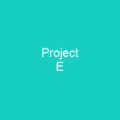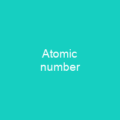United States of America v. Progressive, Inc., Erwin Knoll, Samuel Day, Jr., and Howard Morland, 467 F. Supp. 990, was a lawsuit brought against The Progressive magazine by the United States Department of Energy in 1979. A temporary injunction was granted to prevent the publication of an article that purported to reveal the \”secret\” of the hydrogen bomb. The article was eventually published after the government lawyers dropped their case during the appeals process, calling it moot after other information was independently published.
About United States v. Progressive, Inc. in brief
 United States of America v. Progressive, Inc., Erwin Knoll, Samuel Day, Jr., and Howard Morland, 467 F. Supp. 990, was a lawsuit brought against The Progressive magazine by the United States Department of Energy in 1979. A temporary injunction was granted to prevent the publication of an article that purported to reveal the \”secret\” of the hydrogen bomb. The article was eventually published after the government lawyers dropped their case during the appeals process, calling it moot after other information was independently published. Despite its indecisive conclusion, law students still study the case, which \”could have been a law school hypothetical designed to test the limits of the presumption of unconstitutionality attached to prior restraints\”. The first atomic bombs were developed by the wartime Manhattan Project. This was carried out in secret, lest its discovery induce the Axis powers, particularly Germany, to accelerate their own nuclear projects, or undertake covert operations against the project. The military and scientific leaders of the Manhattan Project anticipated a need to release details of their wartime accomplishments, principally as a form of recognition for the participants who had labored in secrecy. The scientists, in particular, chafed under the wartime controls, which were not lifted with the surrender of Japan. On September 1, 1945, Samuel K. Allison used the occasion of the founding of the Institute for Nuclear Studies to call for freedom to research and develop atomic energy. In November 1945, Major General Leslie Groves, his scientific adviser, Richard Tolman, and Smyth agreed that information could be publicly released if it was essential for an understanding of the project, or was already generally known or deducible, or had no significance to the production of atomic bombs.
United States of America v. Progressive, Inc., Erwin Knoll, Samuel Day, Jr., and Howard Morland, 467 F. Supp. 990, was a lawsuit brought against The Progressive magazine by the United States Department of Energy in 1979. A temporary injunction was granted to prevent the publication of an article that purported to reveal the \”secret\” of the hydrogen bomb. The article was eventually published after the government lawyers dropped their case during the appeals process, calling it moot after other information was independently published. Despite its indecisive conclusion, law students still study the case, which \”could have been a law school hypothetical designed to test the limits of the presumption of unconstitutionality attached to prior restraints\”. The first atomic bombs were developed by the wartime Manhattan Project. This was carried out in secret, lest its discovery induce the Axis powers, particularly Germany, to accelerate their own nuclear projects, or undertake covert operations against the project. The military and scientific leaders of the Manhattan Project anticipated a need to release details of their wartime accomplishments, principally as a form of recognition for the participants who had labored in secrecy. The scientists, in particular, chafed under the wartime controls, which were not lifted with the surrender of Japan. On September 1, 1945, Samuel K. Allison used the occasion of the founding of the Institute for Nuclear Studies to call for freedom to research and develop atomic energy. In November 1945, Major General Leslie Groves, his scientific adviser, Richard Tolman, and Smyth agreed that information could be publicly released if it was essential for an understanding of the project, or was already generally known or deducible, or had no significance to the production of atomic bombs.
The first copies of the Smyth Report went on sale on August 12, 1945. Four reviewers assessed the documents and declassified about 500 of them by the end of the year. In May 1945, Senator Brien McMahon introduced an alternative bill on atomic energy, which quickly became known as the Atomic Energy Act of 1954. This bill was initially a very liberal bill towards the control of scientific research, and was broadly supported by scientists. It was drafted by two War Department lawyers, Kenneth C. Royall and William L. Marbury. Their draft bill ran into strong opposition from influential Senator Arthur H. Vandenberg, particularly from the influential Senator L. Brien. While the May 10-Johnson bill provided for civilian control for any invention related to atomic energy to be patented, it also provided for any patent related to any invention to be given to the commission to patent. If there was no secret to be kept, then there were no reason for security. The New Republic took the position, emphasized with italics, that \”there is no secret to be kept\”, and that the knowledge of how to build an atomic bomb had been “the common property of scientists throughout the world for the last five years\”. President Harry S. Truman took a similar line in his first speech to Congress on nuclear matters that month.
You want to know more about United States v. Progressive, Inc.?
This page is based on the article United States v. Progressive, Inc. published in Wikipedia (as of Dec. 04, 2020) and was automatically summarized using artificial intelligence.







